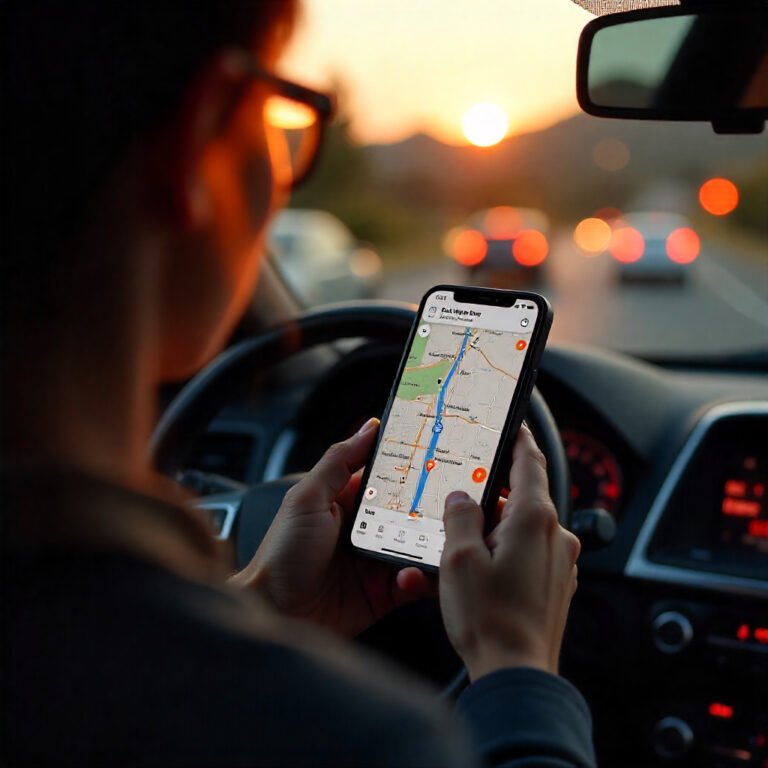“My sheep listen to my voice. I know them, and they follow me” (John 10:27).
Usually, when you’re headed somewhere unfamiliar, maybe a friend’s house in a far-off city or an appointment at, let’s say a law firm whose address you’ve never even heard of, common sense kicks in. You reach for your phone, open your map app, and input the address.
Why? Because no one sets out on a real journey without a sense of direction.
Once the map is set, the logical thing to do is to follow every turn, every bend, every roundabout, and every single instruction the map gives you. You don’t argue with it. You don’t pretend to know better. You just follow because you trust that it knows the way.
Maps Were Always Part of the Journey
Maps today aren’t what they used to be. We’ve moved from folded paper maps to advanced digital navigation. Now, your map not only shows the road, it gives you live traffic updates, estimates your arrival time down to the minute, warns you of traffic jams ahead, and even suggests fuel stops in advanced countries. If traffic is heavy on your current route, it says “rerouting or suggests an alternate route,” saving you time and fuel.
This, by the way, also saves you some extra bucks you would have spent on topping up your fuel and even your strength. Because, take it from someone who loves road trips, it can be stressful. You feel the aches in your knees, your thighs, and your hands.
What’s more, the map shows your real-time position. You see exactly how far you’ve gone and how close or far you are from your destination.
Everyone uses a map at some point in their lives. For those who don’t have mobile devices or aren’t tech savvy, they make intermittent stops to ask or confirm if they are still on the right track.
Maps aren’t new. They’ve existed for centuries. Many printed Bibles even contain maps of Israel, of Paul’s missionary journeys, of the wilderness route the Israelites took. It is not a modern thing. The difference is just access and ease. Now, everyone can use a map anywhere in the world.
Even Moses, who had the literal pillar of fire by night and cloud by day, the physical visible presence of God leading the people, still looked to human wisdom too. He told his brother-in-law: “You know where we should camp in the wilderness, and you can be our eyes” (Numbers 10:31).
Why would he say that? Because his brother-in-law knew the terrain. He understood the bends, the risky valleys, the safe watering points. In those days, that kind of knowledge very likely made a person indispensable.
I imagine that those who knew routes well were like extra gifted people who were indispensable. In fact, it is possible that that was some people’s full-time job. That must have been a very demanding one. One that meant these men were on the road for the most part of their lives.
So if even Moses, being divinely guided, still recognized the value of accurate direction, how much more do we need God’s leading?
You Don’t Know Everything
Now, I said all this to make a point. In reality, this is how our journey through life is.
No matter how good, intelligent, experienced, educated or gifted you are, you still don’t know everything. In fact, you don’t know many things. The more you know, the more you realize you don’t know. You can’t predict who’s trustworthy. You don’t know which partnership is a trap. You can’t foresee the ripple effect of a rushed decision.
When Solomon was asking for God’s help, he didn’t ask for wealth or power. Instead, he said: “But I am only a little child and do not know how to carry out my duties” (1 Kings 3:7). That is the right posture, because the truth is, we don’t know our left from our right without God.
As we journey through life, it is important to know that you can’t see what is right around the corner. Sometimes, not even what is right in front of you. Only God knows the intents of the people you relate with. So He is the best Person to direct you. To order your steps. In making friends, in getting into business dealings, in choosing partners, in parenting, in ministry. He alone sees the full picture.
Proverbs says:“Trust in the Lord with all your heart and lean not on your own understanding. In all your ways submit to Him, and He will make your paths straight” (Proverbs 3:5–6).
So I ask you: What’s the map saying? Or are you driving off, ignoring the directions, hoping to figure it out as you go?
The Holy Spirit is your Navigator. The Word of God is your map. You may not always see the full route, but if you listen, if you yield, you’ll hear the voice behind you saying: This is the way. Walk in it” (Isaiah 30:21).
You Don’t See the Whole Picture And You Don’t Need To
Have you noticed that when you’re using a digital map, you never really understand the full journey all at once? All you get are small instructions:
“In 500 meters, turn right.”
“Take the next exit.”
“Keep left.”
“Take a bend here.”
So, following the map is a walk of trust, not full disclosure. Even if it does fully disclose the entire routes it will be taking you through, because you aren’t familiar with the terrains, you still won’t be able to understand or interpret what you see.
So we don’t argue with the map. We don’t say, “But why should I turn right?” or “What’s even in that area?” We don’t demand to see every street and corner before we start moving. We follow step by step, believing that the map knows what it is doing.
Yet when it comes to God, we struggle. We trust a mobile app more than we trust the Maker of the universe.
We say, “Lord, why this job?”
“Why this delay?”
“Why not now?”
“Why him?”
“Why her?”
“Why me?”
We want the full picture. We want explanations before obedience. But that is not how divine direction works. Just like the map, God gives us instructions, sometimes one bend at a time. He tells us to stay, to move, to wait, to turn. Our part is to trust, not to question every step.
Abraham didn’t get a full map. God simply said: “Go from your country, your people and your father’s household to the land I will show you” (Genesis 12:1). No name. No coordinates. Just a promise and a direction.
God didn’t say the land I have shown. He said “the land I will show. Meaning, start walking before you see. That is how faith works. Imagine if Abraham had said, “But where exactly, Lord? Will there be schools for my children? Will I have land rights? What is the road network like?” He would have missed it.
What makes the journey beautiful is that God doesn’t need to show you everything. He only needs you to trust Him. Jesus didn’t say, “I’ll hand you the roadmap.” He said: “I am the way and the truth and the life” (John 14:6).
He didn’t say He would show the way. He said He is the way. That means Jesus Christ is all the way, all the direction and all you need. You don’t need a map when you’re walking with the Way. You only need to follow. You also don’t need the full picture. You just need the next step. God is not trying to confuse you. He is training your trust. And trust means walking even when you don’t know where the road bends. “Whether you turn to the right or to the left, your ears will hear a voice behind you, saying, ‘This is the way. Walk in it’” (Isaiah 30:21).
So here is the question: if you can follow a digital voice without second-guessing, why is it so hard to follow the voice of the Holy Spirit?
Let’s stop treating God’s voice like a suggestion. He is not a map you can override. He is your Father. He sees the whole picture. He knows the traffic James ahead, the ditches hidden around the bend, the thief waiting at that wrong turn. He sees what you can’t. Stop demanding the full picture. Just follow Him.
Today, ask yourself:
What’s the map of God’s word saying? What’s Jesus Christ saying?
Have you tuned out His voice because He’s not giving you the details you want?
Have you allowed impatience to make you ignore the next instruction?
God’s Word is your map. His Spirit is your live Navigator. He knows where you’re going, even when you don’t.
Follow Him, one instruction at a time.






